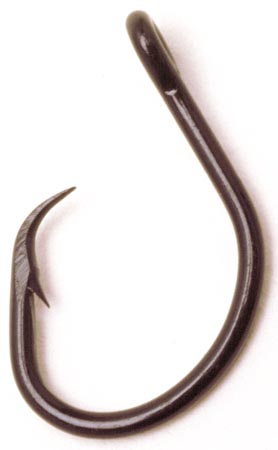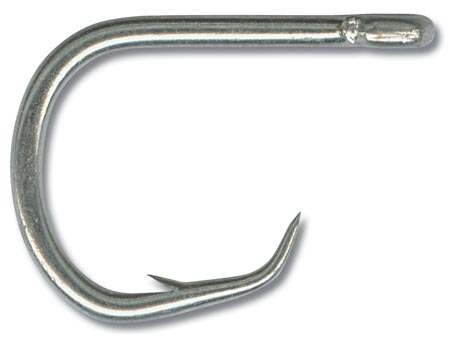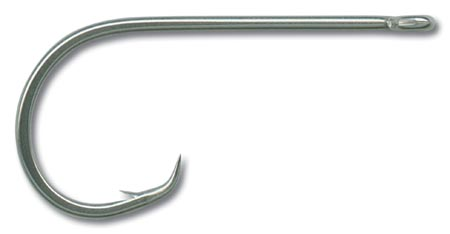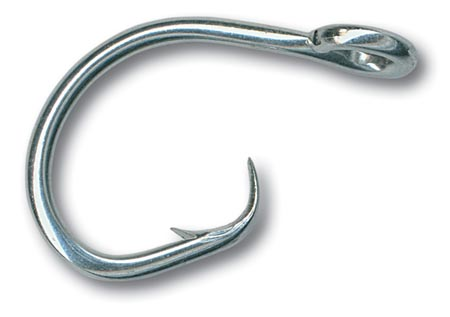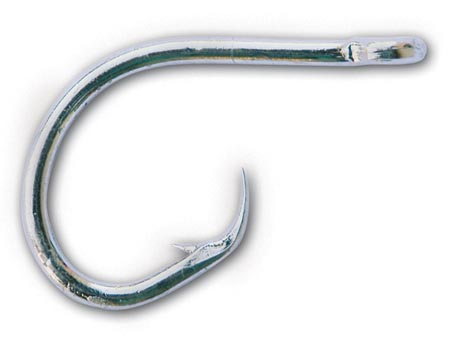Mustad Circle Hook Roundup
- NAFA
- Jul 1, 2007
- 6 min read
MUSTAD CIRCLE HOOK ROUNDUP
By Alex Julius
Several years have now passed since the circle hook craze first gripped the nation. Many new circle hooks came onto the market in that time. Some worked well and survived, others didn’t. The hype has died down a bit, but interest in circles remains high, spurred on by continuing support for circle hooks in catch-and-release fishing, and an increasing tendency for tournaments to mandate their use for live or natural bait fishing.
It is believed, and experience tends to confirm it, that circle hooks reduce the incidence of deep hookups or gut hookings, thus increasing the survival chances of released fish. The way the circle hook works, the hookup is most likely to be in the lip or mouth rather than the gut. In just about every field of fishing, there is interest in the circle hook concept.
As you’d expect, Mustad has by far the largest range of circle hooks on the Australian market, so it’s a good opportunity to look at what circle hooks they’ve got and what they are good for. The accompanying table shows the current range and their vital statistics (there are no less than 8 Mustad circle hook patterns sold in Australia of interest to anglers, and that’s not counting some highly specialised patterns made for commercial fishing and other models marketed in other countries). It’s amazing to see the size and diversity of the range, from heavyweight saltwater circles right down to tiny, delicate circles for tying trout flies on.
The early circle hooks were, almost by definition, heavyweight hooks. The wire gauge had to be reasonably heavy or the long turned-in point would be too vulnerable to damage. These heavy gauge hooks restricted circle hook use to commercial longline and dropline fishing and in the sportfishing area, to heavy bottom fishing and a limited amount of heavy game fishing. The classic circle design with its narrow gap between the point and the shank was also limited in the types of baits it could be used with.
But as time went on and angler interest increased, we saw new variations on the circle hook theme. Mustad was able to apply its latest hook manufacturing technology to produce new, lighter and more angler-friendly circle hook patterns, extending the circle’s influence to fishing styles and species not previously contemplated — like the trout fly hooks mentioned earlier.
Some of these new generation circles don’t look much like the early classic circle hooks. Some might argue that they are really hybrids or ‘pseudo-circles’ and shouldn’t be called circle hooks at all. But the real question is whether they actually work. Do they achieve what the circle hook was originally meant to do in the sportfishing context — reduce the chances of deep hookups and increase survival of released fish? And how successful are they at catching fish? Not all fishing is catch-and-release and in any case, you can’t release fish unless you catch them in the first place.
We have now had several years since the start of the craze to look at the results in the field and start to draw some conclusions. This comes from tournaments in which particular types of Mustad circle hooks have been used systematically, as well as the feedback Mustad receives from anglers in Australia and elsewhere. There is also a lot of work going on by various researchers and many questions still to be answered. Nobody can guarantee that a certain hook offers a given percentage of fish-friendly hookups. But we can give a sort of form guide for circle hooks.
Just a word about sizing of circle hooks. It still confuses a lot of people because of the great variation in point size and gap width among circle hooks. A given size of circle hook can have very different characteristics to aconventional ‘J’ hook of the same stated size, so it pays to have a look at the hook before committing to it. You can see the sportfishing circle patterns in the Australian range at www.mustad.no/australia_nz and get a printout of the hook in actual size.
The Mustad Classic or ‘commercial’ circles – 39960D and 39965D
If there is such a thing as a definitive or classic circle pattern, then the Mustad 39960D is it. One of the most widely adopted of all the heavy circle patterns, the 39960D is a commercial hook but commonly used in sportfishing, mainly for billfish on medium-heavy tackle and heavy bottom fishing. The 39960D is the ‘straight’ version, with a point that is not offset i.e. neither kirbed nor reversed. Its close relative, the 39965D, has an offset (slightly kirbed) point.
To some anglers , an offset point automatically disqualifies a circle hook as fish-friendly. Many tournaments which allow circle hooks specifically disallow circles with offset points. The thinking is that an offset point is more likely to catch deep down the fish’s throat. Strictly speaking, each hook should be judged on its merits in this regard, but anglers who are seriously into catch and release, especially in organised competition, need to bear this in mind when selecting circle hooks. This is described in the ‘Point angle’ column in the accompanying table.
Both the 39960D and 39965D are marketed as commercial hooks but the 39960D in particular has a foot in both camps, and several sportfishing retailers sell them.
The Mustad 39960BL Demon Circle
This is a classic straight circle expressly made for sportfishing. It has a matt black finish (as opposed to the Duratin on the commercial versions) and is based on the 39960 pattern, so it is directed squarely at the game fishing market. It was the first Mustad hook to bear the name ‘Demon’, which is now the name of the range of Mustad sportfishing circles.
The Mustad Tainawa 20202R
Fundamentally a commercial hook, the Mustad Tainawa had a cult following among anglers well before the recent circle craze started. (The Tainawa also sported a Needle Point long before the current ‘chemically sharpened’ trend). This heavy, strong and compact circle hook was mainly used for floating baits for snapper. Many lighter circle patterns are now offered for this purpose, but the original Tainawa still has a fan club.
The Mustad Demon Fine Wire 39952NPBL
This was the first hook in the Demon range to sport a chemically sharpened needle point — now upgraded to the Mustad Ultra Point. The deFine Wire is relative, and very much in the eye of the beholder. It is finer than the 39960 patterns, but is still quite a hefty hook, more than capable of matching it with hard pullers like snapper and kings.
This hook is interesting because it was the first Mustad circle hook made down to very small sizes, making it a contender for species like bream and drummer. The offset (kirbed) point made baiting up a bit easier but catch and release devotees were a little wary of it. Nevertheless, it racked up some very impressive form as a snapper hook, a live bait hook for kings and light tackle hook for sailfish and marlin. If you don’t mind the offset point, it’s as good as it ever was for those fish.
The Demon Light Gauge 39951NPBLN
This is Mustad’s latest development in sportfishing circle hooks and it shows a distinct widening of the gap and shortening of the point. That makes it much easier to bait up and there is no doubt that angler reaction to this hook has been the best of all. But is it really a circle, and does it do what a circle is supposed to do? Apparently, yes. This hook has some documented tournament experience to confirm that it not only hooks up well, but gives the fish a fair shake.
One of our premier barra tournaments, the Rocky Barra Bounty, held on the Fitzroy River at Rockhampton Qld, has been supplying Mustad circles to competitors in the bait fishing section ever since the tournament started in 1999. Its current circle of preference is the Mustad Demon Light Gauge size 7/0. Tournament organisers keep precise records of the hookup locations of the hook types used, on both barra and other species landed.
In the last year, Mustad has released two bigger sizes of the Demon Light Gauge, sizes 9/0 and 10/0,making it a strong contender for the light tackle billfish fishery. At the other end of the scale, it goes down to size 4. So the Demon Light Gauge is Mustad’s current all-round circle hook, made to suit the general trend towards lighter tackle.
Fly fishing circles
Mustad’s Signature fly hook series contains two ‘Circle Streamer’ patterns — circle hooks with medium-long shanks. The C51SBLN is a light gauge series finished in black nickel which ranges down to a tiny size 16 — surely winning the prize for the world’s smallest circle hook. The C71S SS is a somewhat heavier, forged version in stainless steel, ranging from size 3/0 down to 8 and primarily designed for saltwater fly fishing.
But there’s no law that says fly hooks can only be used for fly fishing, so if you were looking for a long shank circle hook, say for whiting, garfish, or even live bait catching then one of these would be perfect.






